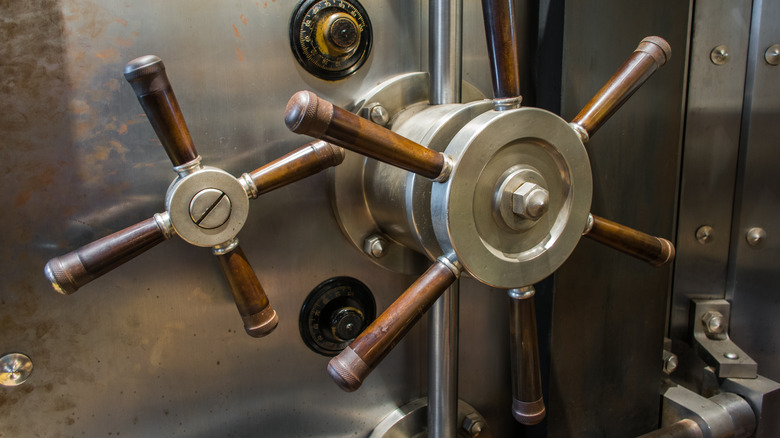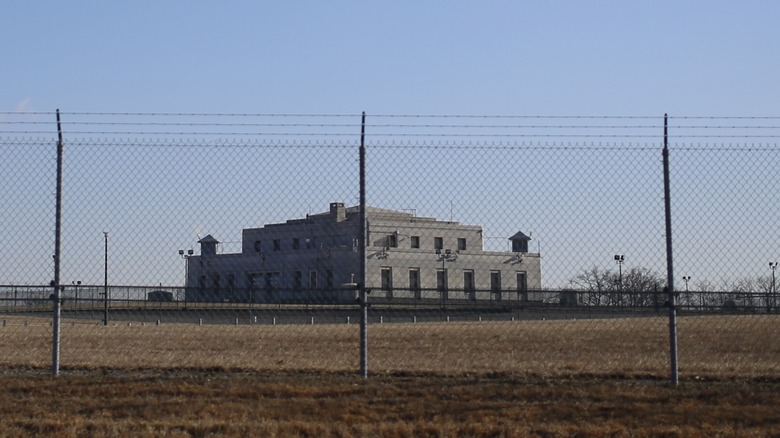What's Really Inside Fort Knox?
If you've seen the 1964 James Bond classic "Goldfinger," you know what's inside of Fort Knox, the common name for the U.S. Bullion Depository near the Fort Knox Army base — piles and piles of gold bars. But is that even true?
Despite ever-present conspiracy theories that say the gold in Fort Knox has been sold off over the years, in general, it's believed that the vault contains 147.3 million ounces of gold in bars and coins, according to the private gold distributor United States Gold Bureau. On the free market, that gold would be worth about $266.7 billion at the time of this writing (via APMEX), though the government sets the official price much lower than the going rate to avoid wild fluctuations, according to CBS News.
But gold's not all that Fort Knox holds. It's also home to one of the most secure vaults in the entire world (via Yahoo!), and that's a feature that may be as good as gold. It's been used over the years to store priceless artifacts during wartime, and given rise to the expression "as secure as Fort Knox."
Storing the Gettysburg Address and the Magna Carta
During World War II, countless historical wonders went missing or up in flames — Peter the Great's Amber Room, the painting "Portrait of a Young Man" by Raphael, and early human fossils, according to History. The United States, worried about a war fought on American soil, protected its cultural heritage by putting the Constitution, the Declaration of Independence, Lincoln's second inaugural and Gettysburg addresses, and the Articles of Confederation in the vaults at Fort Knox, according to a 2016 article at Politico.
Also in the mix was an ultra-rare Gutenberg Bible and an original copy of the Magna Carta, on loan from England, which asked the United States to keep it safe for them. Fort Knox, with its four-feet-thick concrete walls and blast-proof doors (via United States Gold Bureau), was the safest place the government could find.
The facility doesn't hold the history of Western democracy anymore, but it's still possibly the most heavily guarded place in America (and maybe the world, according to Reader's Digest). So, are they guarding gold, or guarding the secret that there's no gold left? The latter conspiracy reached its height in the 1970s, when the United States went off the gold standard. So, in 1974, the government let congress members and a hundred reporters inside to take a look around. What did they see? Piles and piles of gold bars.

